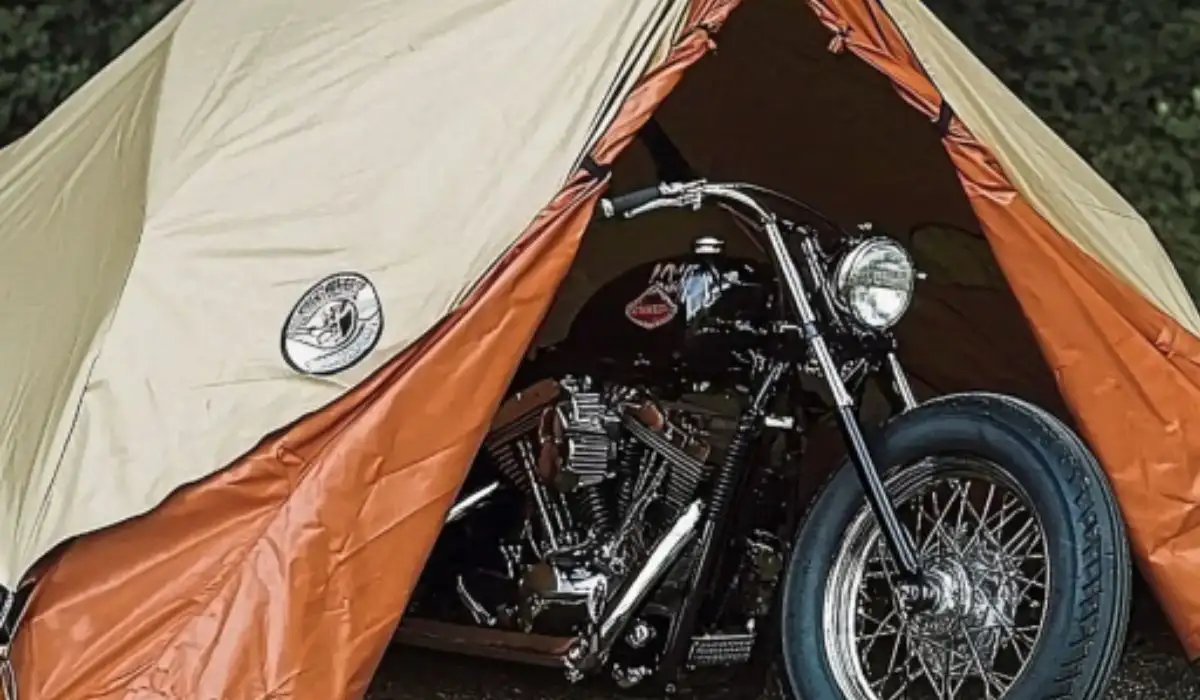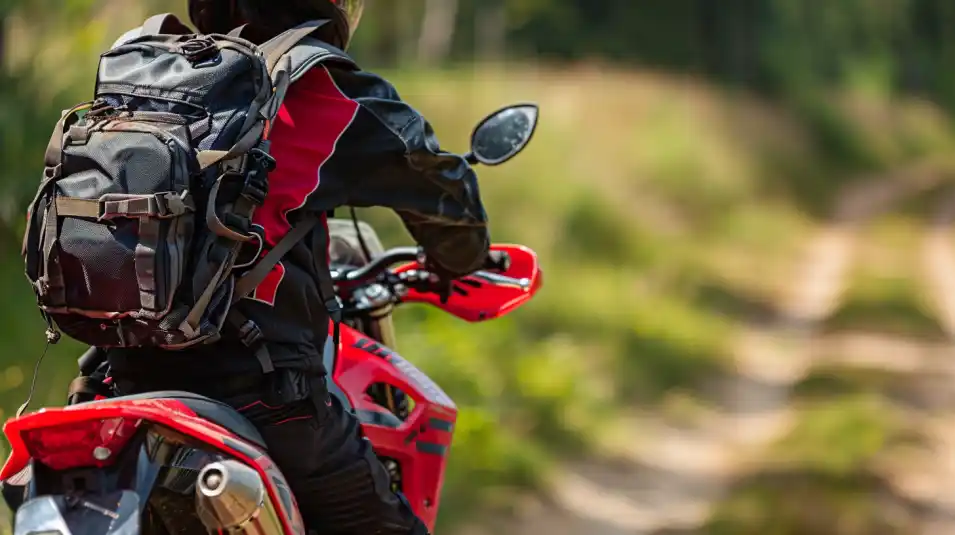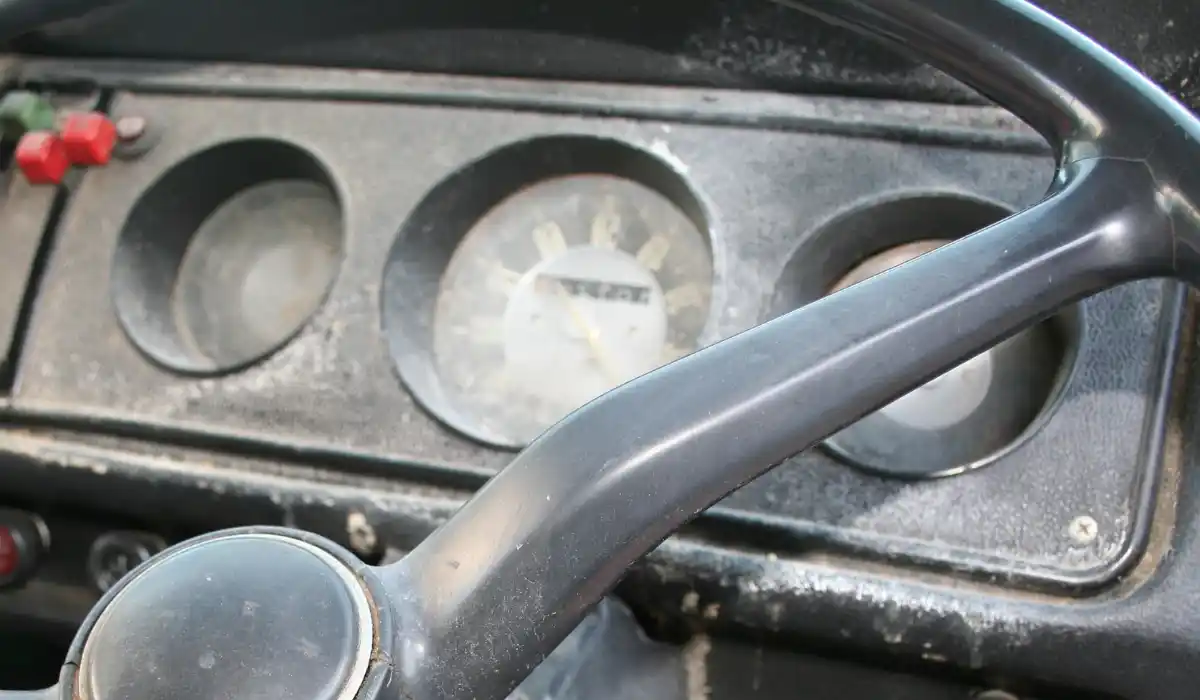In this post we’ll take a look at how to winterize your motorcycle properly for winter storage.
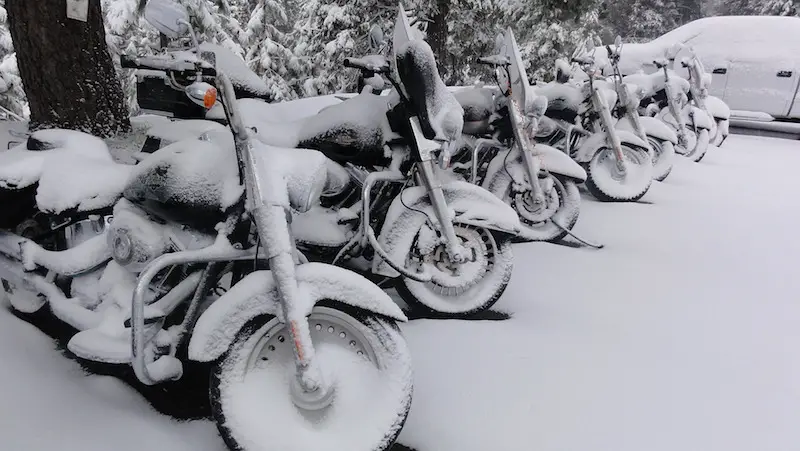
Winterizing your bike is one of the most important motorcycle maintenance steps for riders in colder climates.
Pulling your bike to the back of the garage in October and letting it sit there until April is a bad idea.
Storing your motorcycle like this will result in a dead battery and damaged coating or components. It could get worse if a mouse decides to chew some wires or build a nest in your exhaust.

Knowing how to properly winterize your bike will save you a lot of stress and money in the spring when you want to start riding again.
Take the time to do it properly the first time and your ride will be go to do whenever you are.
Let’s take a look at the main steps in winterizing your bike.
Jump Ahead To:
How to Winterize Your Motorcycle in 10 Easy Steps
1. Prepare Your Bike for Storage
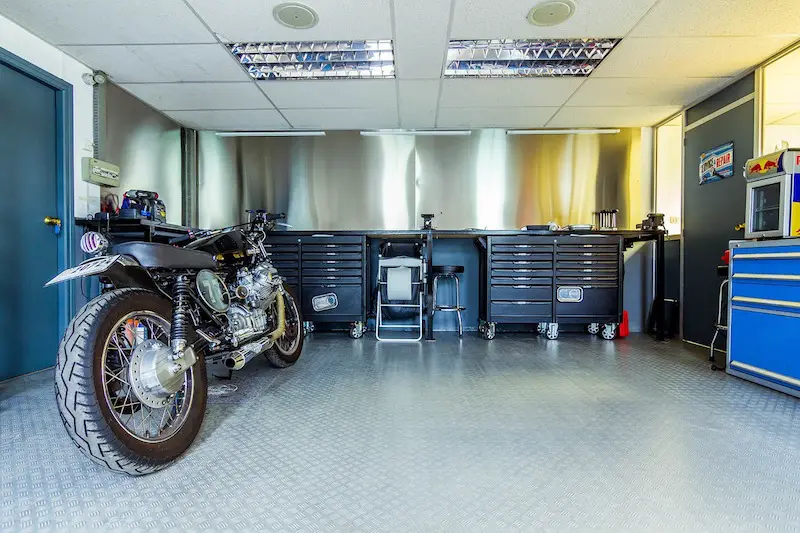
After your last ride for the season it’s important to thoroughly clean your bike before putting it away.
Leaving bugs, water spots, dust, and road debris sitting on your can damage your paint and permanently corrode the finish.
If you can, wash your bike outdoors and hand-dry it to remove all of the moisture. You could use hair-dryer or leaf blower to completely dry those hard to reach spots.
Once your bike is clean and dry add a coat of wax to the fairings and exterior components. This is a protective barrier against rust, dust, and moisture.
When you’re done waxing spray the bike with WD-40. This will get remove any leftover water or moisture and protect the metal surfaces on your bike from corrosion.
2. Change the Oil and Oil Filter
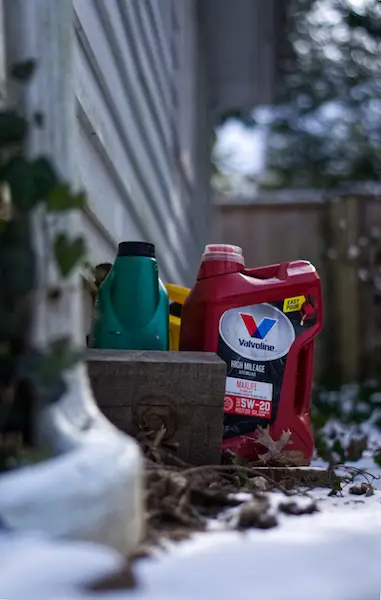
Before putting your bike away for the winter change the motorcycle oil and oil filter. The old oil is full of particulate that you don’t want sitting and seeping into your engine.
The other benefit is your bike will have fresh oil when you pull it out the spring to start riding. This saves you the effort and your bike will thank you for it.
While there are winter oils available, you’ll be fine using your standard motorcycle oil. Don’t forget to change the oil filter whenever you change the oil.
For older bikes, consider further protecting the internal components of your motorcycle. Moisture from the cold winter air can gather in engine compartments where rust could form.
Avoid leaving the bike covered for months to keep it ventilated. In a covered garaged or underground parking space your bike doesn’t need a heavy-duty motorcycle cover.
3. Prepare the Fuel System
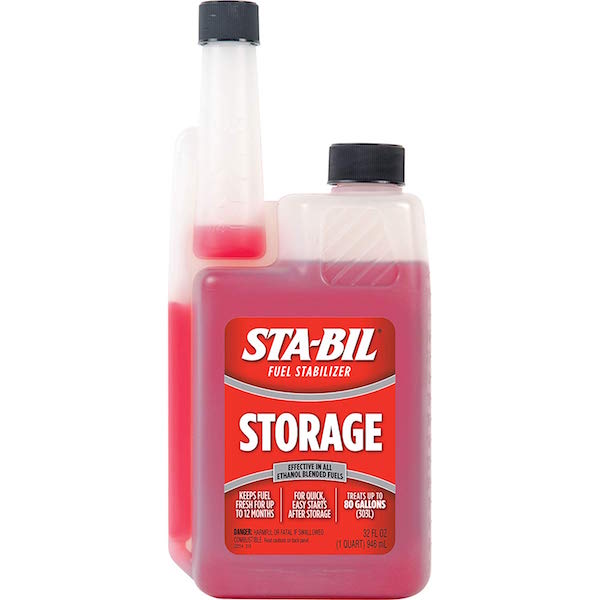
Fuel stabilizer is the key material for prepping your motorcycle fuel system for the winter. It will keep your gas tank from rusting out. This additive also ensures the current fuel doesn’t break down over the following months.
On your last ride of the season fill your bike with fresh gas before bringing it home. Add the recommended amount of fuel stabilizer to your gas tank.
After adding the stabilizer go for a short ~15 minute ride. This will mix the stabilizer through the entire fuel system.
With a full tank and fuel stabilizer your motorcycle is good to sit for up to 6 months during the winter.
Alternatively, some riders like to drain their fuel systems completely. This includes draining the fuel tank – a cumbersome process that can be easily avoided using the method just discussed.
For storage longer than 6 months consider draining the fuel tank.
4. Clean the Chain
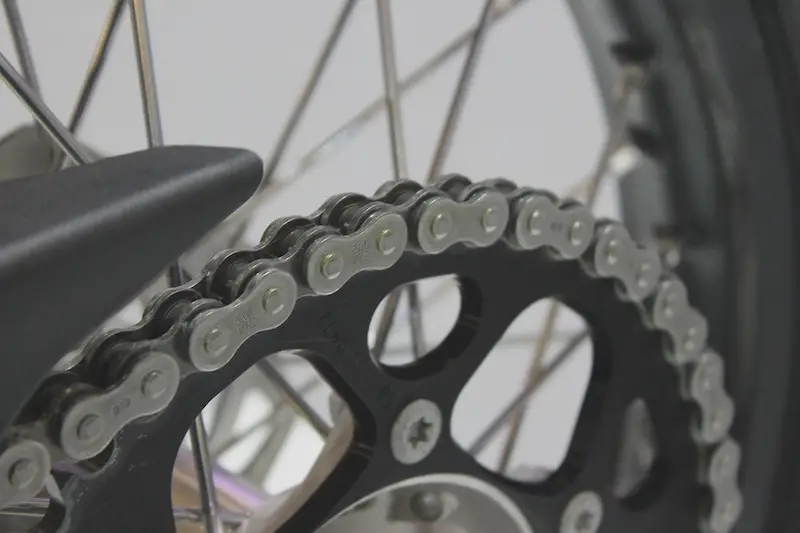
Cleaning your motorcycle chain should already be part of your basic motorcycle maintenance route.
This doesn’t take very long and will protect your chain while it’s not being used. Not cleaning your chain and letting it sit during the winter can result in it getting rusty. It’s also going to be harder to clean in the spring, after the old lube and road debris has gotten caked on.
At the same time you’re changing the oil and filter, clean your motorcycle chain with your preferred technique.
Any lube left on the chain over the winter will collect moisture, dust, and debris. It’s not recommended to leave these materials sitting on your bike for an extended period of time. For cleaning we recommend using kerosone and your favorite motorcycle chain cleaning tool.
Once the chain is clean avoid adding any lube until you’re ready to ride. In the spring, lubricate the chain with the best chain lube you have before your first ride of the season.
5. Visually Inspect Your Motorcycle
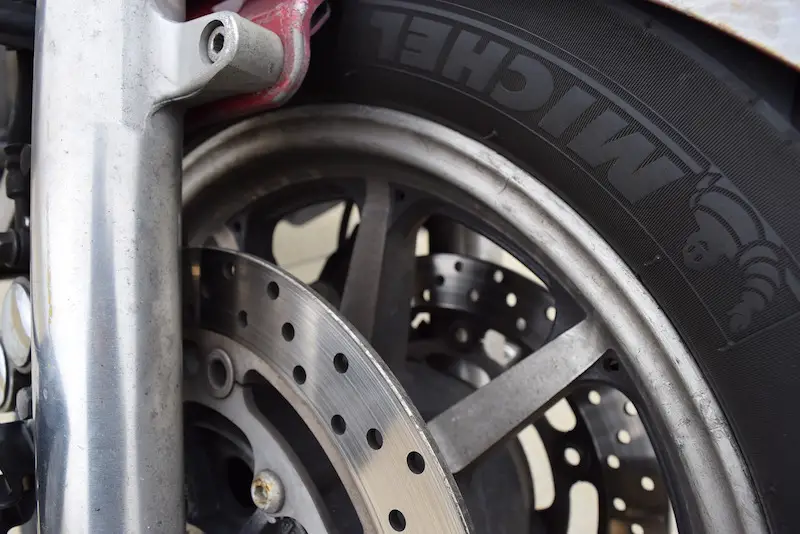
Now that the motorcycle is clean and lubricated it’s a great time to visually and manually inspect everything.
Start at the top and work your way towards the ground. Thoroughly inspect all of the motorcycle components you can see and touch.
Look for any wear and tear or damage. Follow your specific motorcycle manual to see what needs to be inspected or replaced.
Tighten all bolts and parts you can easily reach. Make note of any rust or problem areas.
The winter season is a great time to deal with any motorcycle issues. This way you can order any parts you might need or perform any required/preventative maintenance before the spring riding season. The next time you hop on the bike, it’ll be perfect and ready to ride!
6. Remove the Battery + Keep it Charged
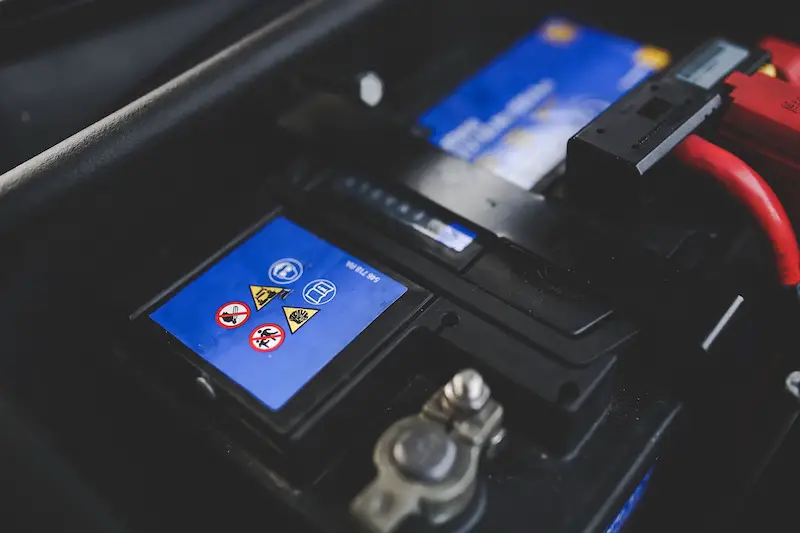
Without being ridden your motorcycle battery will slowly lose its charge. After 2+ months it’s likely you’ll go to start your bike to find that the battery is dead.
A motorcycle battery tender is the easiest way to avoid this issue.
Tenders are an electrical tool that’s plugged into the wall and hooked up to your battery. It keeps the battery charged and topped off so it doesn’t run down.
Depending on the tender you might be able to leave your battery in your motorcycle. The tender can be attached directly and left to rest somewhere on your bike.
Alternatively, the battery can be removed and plugged into a tender in a warmer location or somewhere else indoors. After removing the battery clean it thoroughly before connecting anything.
If the bike doesn’t start after sitting for the winter, you’ll want to fully charge the battery. With a fully charged battery the bike should start. If not, check out our post on the best motorcycle batteries since you’ll probably need a new one.
7. Elevate the Bike
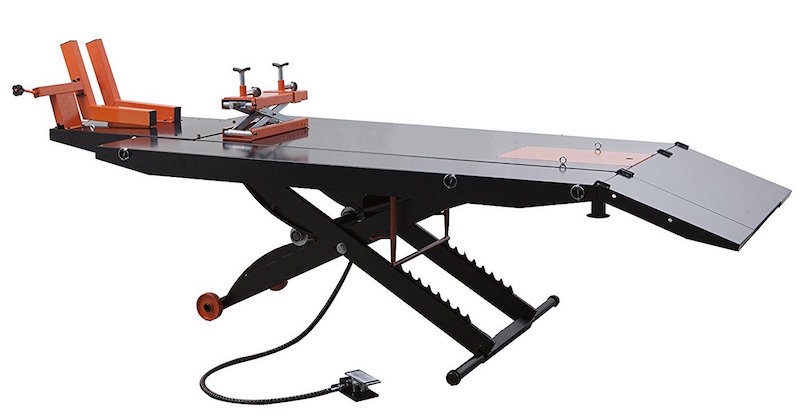
The motorcycle tires will develop flat spots if the bike is left sitting in the same position for an extended period. Elevating the motorcycle off the ground keeps the tires fresh and easier to maintain during the winter.
Motorcycle stands are needed to elevate your bike. There are two different types to choose from whether your bike has spools or needs to be lifted from the frame.
This set up works best for home garages and private storage spaces. Using the stands results in a motorcycle profile that’s too wide for standard parking spaces or smaller garages.
If you need to store your tires directly on concrete, add a piece of plywood, rub it, or carpet underneath them. This prevents moisture from seeping into the tire and prematurely wearing it.
Alternatively, consider using a motorcycle lift to keep your bike off the ground. Don’t forget to regularly rotate the tires to keep them fresh for the next riding season.
8. Avoid Using a Cover
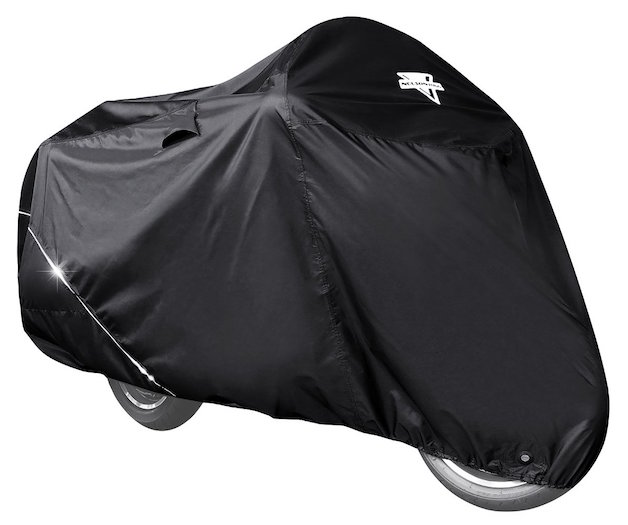
Motorcycles stored indoors during the winter should not be covered. Condensation can form on the bike when it’s covered indoors. This can lead to premature rust and other moisture related problems when you go to prep your bike for the spring.
For outdoor storage a cover is necessary. Look for ventilated covers that come with clips or straps to keep the cover in place.
Lay a blanket or small sheet down on your bike before putting the cover on. Try to remove the cover and ventilate your bike outdoors every few weeks.
Take a look at our guide on the best motorcycle covers if you need one for winter storage.
9. Motorcycle Storage Security
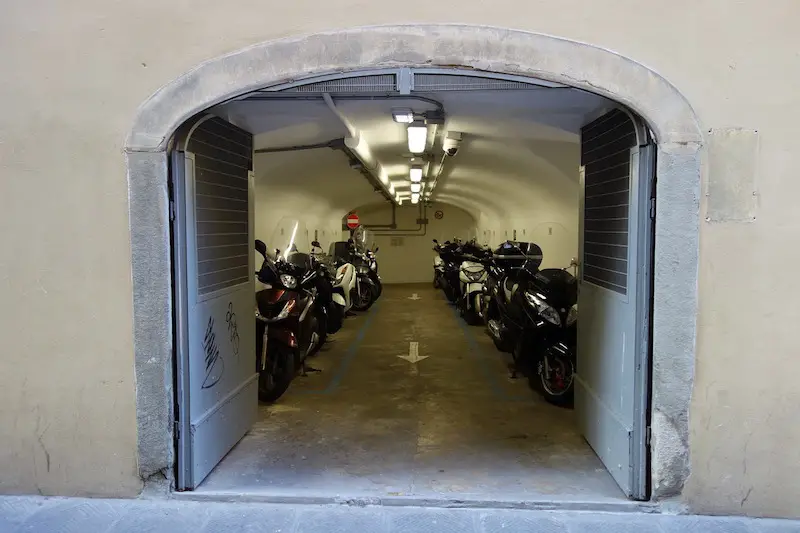
An unattended bike can be a security risk depending on where it’s stored.
Thieves looking for an easy target will notice your bike sitting for extended periods of time. Whether you’re leaving it covered or not, additional security against theft is needed.
These security measures are important for outdoor, uncovered parking or underground, secure parking. There’s no predicting when or where your bike will be stolen so it’s best to be protected.
Along with a cover that can be strapped or clipped together, your motorcycle should also be secured using two or more locking methods.
We recommend using a dedicated motorcycle lock. These are designed to attach to your brake discs and render the bike inoperable unless removed.We also recommend using a separate lock to lock together the motorcycle cover and one of the tires. This is another step that makes it that much more difficult for someone to steal your bike.
10. Check Your Bike Regularly
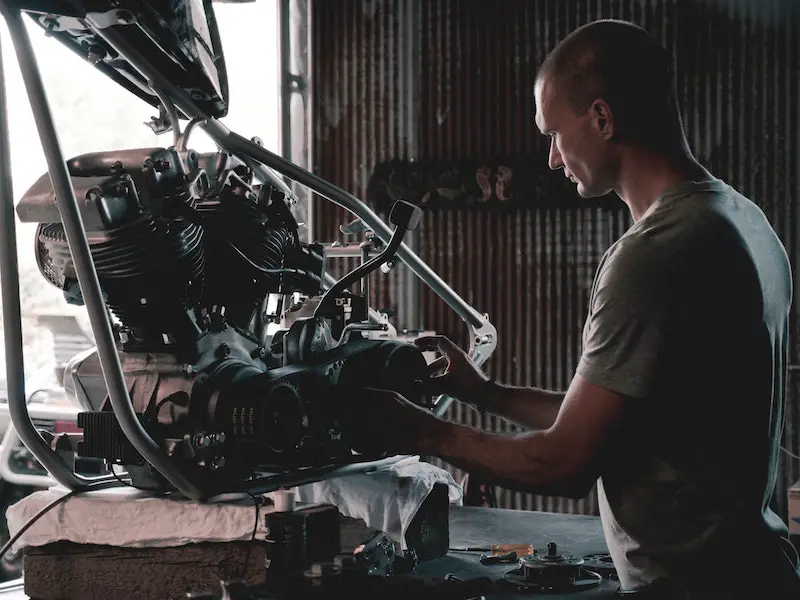
During the winter check your bike every 2-4 weeks.
Give it a thorough spot check. Inspect and rotate the tires if you’re not using a stand.
Don’t turn it on and let it run. It’s better staying completely off until you’re ready to ride in the spring.
Look for any signs of pests that might be nesting in your bike. Continue to work on your winter maintenance schedule.
Planning on Riding Through the Winter?
Proper winter motorcycle gear is needed to safely and comfortable ride during the colder winter months.
Check out our post on the best heated motorcycle gloves for some ideas.

